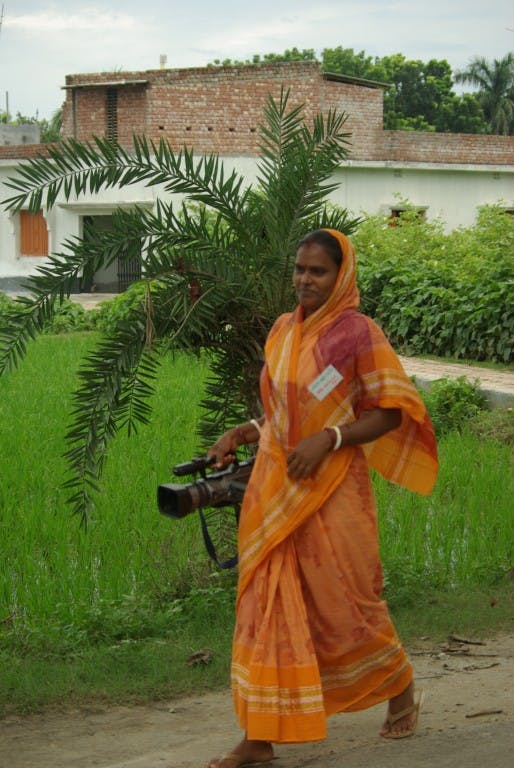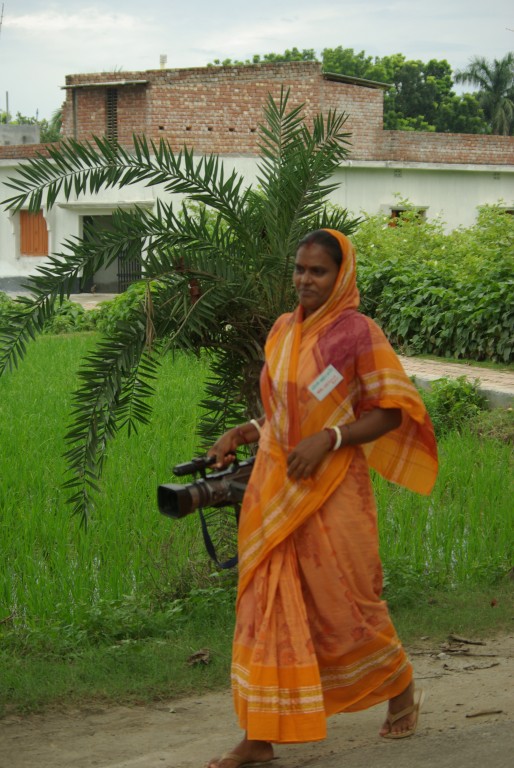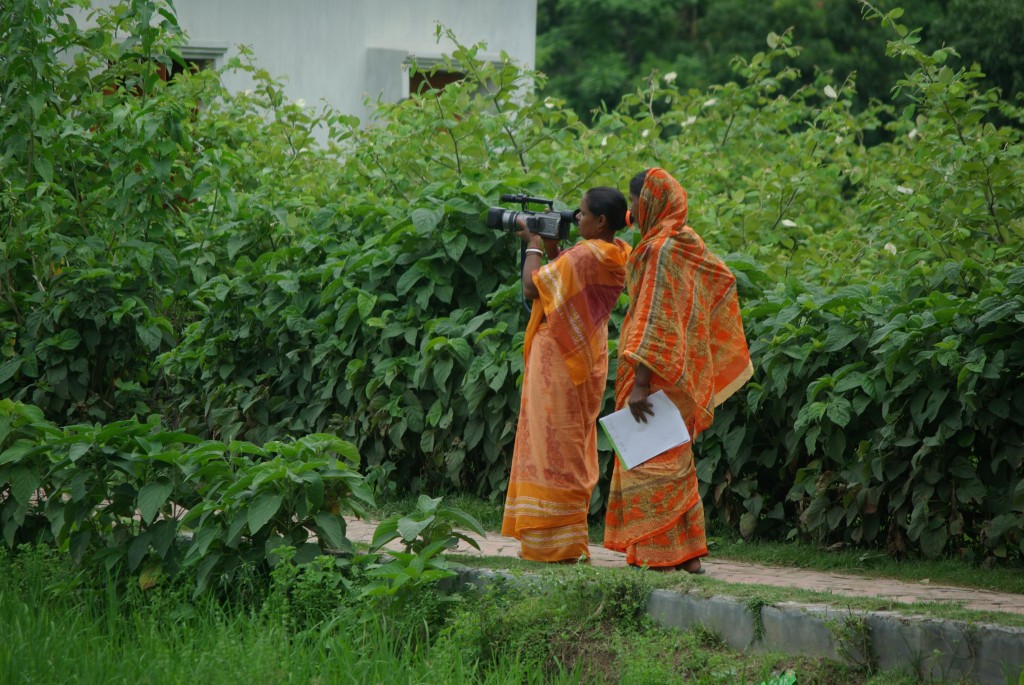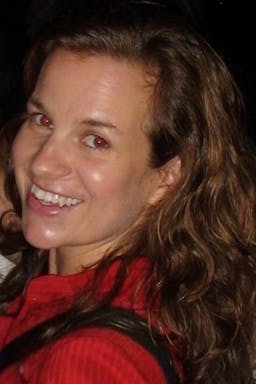Putting the camera in Archana's hands
Jan 21, 2015
First story



Documentary film is becoming an increasingly common medium for reporting the impact of development projects, usually when there are 'success stories' to report. Yet the stories told are often those of the filmmakers, and not the communities where the development project has taken place. I wanted to try something different on the project I lead on Community-based Fish Culture in Bangladesh, inspired by the training I had received as part of Citizen Journalism Malaysia and Malaysiakini. So in July 2009, together with filmmakers from the NGO Proshika, two men and two women from Melandi village in Rajshahi, Bangladesh, were trained for a week in video camera techniques, before they wrote and produced their own film. The experience was one of the most rewarding and inspiring of my life, particularly as I watched the transformation of one of the women, Archana, during the course of the training, and the power that the video camera confers.
I wrote the account below to try to convey something of the participatory video experience, which has the power to transform communities by giving them a voice, often unheard as a result of their remoteness from centers of power. I hope you enjoy it. I welcome your feedback and comments.
'The Island of Dreams and Success'
Standing beside her home, a room in a homestead she shares with her extended family, Archana grins broadly as I ask her about the events of the last week. As one of four people from her village to produce the community's first documentary film, the last 7 days have been something of a departure from the usual daily activities in Melandi village.
Archana is a young mother of two teenage children. Married at 15 to a man she had never met until her wedding day, she now lives with her husband's family in Melandi village, in the western province of Rajshahi, Bangladesh. For the women of Melandi village, life revolves around the home, and family. Rarely venturing beyond the village walls, women are answerable at all times to their husbands, to whom they defer on all decisions. They are rarely called upon to voice their opinions and are excluded from community meetings.
Melandi is a small Hindu community located on an 'island' within the Rajshahi floodplains of the Padma river. Reachable only on foot or motorbike, the village is practically cut off during the flood season when passage by boat is only possible when the flood waters are high. On the day we arrived, heavy rains had made the path along the flood embankment impassable on anything but our feet. We walk barefoot for 3km to reach the village, ankle deep in mud. We visit the village in July, during the flood season, but the water in the floodplains is low. The monsoon rains are late this year. The little rain that has fallen has brought patches of bright green paddy to the floodplain.
This is my second visit to Melandi, as part of a project to boost fish production from nearby Beel Mail, a depression in the floodplain that fills each year during the monsoon rains. Working together, with help from the local fisheries department, the people of Melandi are culturing fish in the flood waters to eat and sell. Arriving in the village, there seem to have been some changes. There are more brick houses amongst the traditional mud houses, more televisions and a palpable change in the atmosphere. My last visit left a stark impression of poverty and hardship. Whether these changes are due to the fish culture project it's hard to say, but the local fisheries officers are pleased with the results and hope to try the same approach in other villages.
Our arrival in the village causes a stir. Visitors are not uncommon, the research team makes this journey regularly from Dhaka – it's the video equipment that is unusual, and the children gather round to get a better look. A meeting is called, and before long the village square is full of people. They have the difficult task ahead of selecting just four people, including two women, to represent their community and make a documentary film on a topic of their choosing.
Including women in the video team isn't immediately accepted by the community leaders, who insist that the women are too busy taking care of children and the household to participate. There is also a murmur of sentiment that women are not capable of using a video camera and producing a film. The film makers leading the video training are insistent and eventually two women are selected to join the video production team. The meeting is brought to a close and the crowd disperses. The newly elected video team prepare to begin their training.
Led by Kazol, a filmmaker from one of Bangladesh's largest NGO's, Proshika, the Melandi team were taken through the basics of video camera techniques. On day one, they each held the camera for the first time. By day two, they were testing camera angles and setting up a range of shots. By day 5, the team produced a beautifully shot film about the town where the training took place, 'The story of Bhobaniganj'. About the film Archana says "I loved seeing our video after we made it. Making it was a great experience. I never went anywhere before and freely spoke to people. It felt great.'
Unlike most women in her community, Archana has spoken directly to the local District Officer, and asked him questions. Under normal circumstances, for a woman to approach a government official in this way would be unacceptable, but with a video camera in her hand, the usual cultural norms no longer apply.
For Kazol, the video represents an opportunity to revive a way of film making that is close to his heart. As part of a ground-breaking participatory video (PV) team, Kazol has seen how powerful video can be in the hands of women. In 1990, he trained a group of village women in video film production. Amongst them was Shahnaz Begum who, after the training, chose her neighbour, Aleya, as the subject of her first film. Escaping her husband, who became violent when her family could not complete her dowry payments, Aleya fled her home and struggled to build a new life with her daughter, living off a meagre income from menial labour and selling betel leaf. In the film, Aleya speaks candidly about her experiences, her voice heavy with emotion. The film recieved international awards, and has been shown in 23 countries. But it is in Bangladesh that the film has had the greatest impact, shown in villages around the country it has empowered women, who recognise their own situation in the experiences related by Aleya, to speak out against the financially crippling dowry system.
The practice of putting cameras into the hands of people targeted by development organisations was pioneered in the 1960's and 70's, but the recent development of relatively inexpensive, digital video cameras has prompted a rapid increase in the use of video to empower communities. Development agencies frequently employ professional film makers to document their success stories. The finished product is polished and professional, but the content is dictated by outsiders who choose the storyline that best fits the communication needs of the agency. In handing over the camera to the communities on the receiving end of international aid and development projects, agencies are not only relinquishing control of the camera equipment, they are also giving the film makers control over the stories they choose to tell and it's not uncommon for communities to find importance in a local story overlooked by outsiders.
Insightshare, an organisation founded by Nick and Chris Lunch, is a leader in the training and application of participatory video. The organisation has trained groups all over the world, frequently working with indigenous groups who have produced videos on a diverse range of issues. Nick Lunch describes the participatory video process as 'amplifying the voices of the poor, of the disadvantaged, the marginalised, people who don't get to speak, who don't have a voice.' The magical quality they attribute to PV, which unleashes something within most people when they have a camera in their hands, seems to be most pronounced when the camera is placed in the hands of women.
"I find often the empowerment is all the more strong for the women", says Chris Lunch in an interiew with OneWorldTV, "they feel they are doing something new, it's giving them new possibilites, because often they are able to interview men or enter contexts where perhaps they wouldn't normally enter. The camera does somehow allow women to transgress some boundaries in a non-threatening way."
The transformation that the Lunch brothers describe was also clearly apparent amongst the Melandi video team, whose confidence grew visibly from day to day. For Archana, the transformation was most profound.
'Before the training I was a little scared', she admits. 'I am not educated and I was worried whether I would be able to learn. I only knew I have to work with a video. But I had never heard of, or touched a video camera before. I loved the experience and felt great when I held the camera.'
On the fifth day of their training, the team chose the topic of their film, 'Island of Dreams and Success', in which they wanted to describe, through interviews with different people in the community, how their village has changed in recent years. The content of the video was a mystery to me right until the screening in the village on the final day of the PV process.
I had been absent from the village for three days, to make sure we didn't distract the film makers as they shot the video. When we returned, in complete contrast to our visit a week earlier, the rain and mud were nothing more than an incongruous memory as we walk the short distance to Melandi in the noon day heat. My scarf, wound around my head, affords little protection from the sun. My hair is wet and clings to my face as another bead of sweat runs from my forehead to the tip of my nose. But the heat hasn't slowed down activity in the village. As we arrive, the video team marches past us, on the way to the next interview. The village is already buzzing in anticipation of the film viewing later in the evening. The team will edit the film on camera, and show it immediately in a makeshift movie theatre in the center of the village.
As dusk fell around 7pm, the whole village started to gather. A large white sheet had been strung up between bamboo poles and the children, carrying bundles of straw to sit on, began to vie for a place on the ground. The girls, who had put on their best clothes and elaborately tied their hair, were shy of the attention they received as their faces appeared on the huge screen. Technical difficulties with the sound threatened to bring the whole evening to a disappointing end, but with the aid of an enormous television that appeared as if out of nowhere, we were finally able to see the finished product, disturbed only by a flock of geese passing through the crowd.
Although I couldn't understand the language, I was transfixed by the film, and so was the audience. With the composition of the shots and the smooth transitions between each scene, it was hard to believe that this was the work of a team who held a camera for the first time just a week before. The film describes the importance of floodplain fisheries for the villagers of Melandi, and the way that the village has worked together with different people to improve the fishery and to develop the village. What strikes me is how natural and comfortable the interviewees are in front of the camera. I can't help but think that the responses and attitude would have been different if a team of outsiders had made the film. As the film came to end, there was a loud round of cheering and applause, before the crowd quickly dispersed. It was late, and the day starts early in Melandi.
But it's not only about the content of the film - the change in each of the new film makers has been remarkable. The next day we interviewed each of the members of the video team. Each had enjoyed the experience, and wanted to make more videos. They asked for video equipment, not knowing that Kazol was already making plans to provide a camera and equipment, and more opportunities to make films on a whole range of topics. The participatory video in Melandi has become a spring board for Kazol to create a network of rural village video makers, who can harness the power of the video camera to make their otherwise quiet voices heard. I am conscious that being part of this video initiative has been one of the most rewarding experiences of my career to date, as I see the potential for the empowerment of women through film and the way in which the camera gives weight to the opinions of the people of Melandi the village, who may otherwise be overlooked, and unheard, by the authorities. I'm looking forward to seeing where the next video takes them.
The fish culture project is led by the WorldFish Center, based in Penang, Malaysia, and funded by the Challenge Program on Water and Food.




